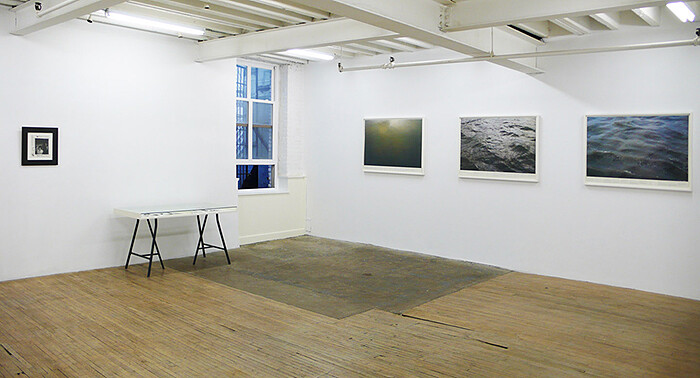The ubiquitous pairing of writing and photography as amateur pastime and teenage site of self-? (? = production, estrangement, submission, replication?) has as much to do with the pioneering use of Livejournal (LJ) in the early 2000s by the then-emergent figure of the emo, as it does with the eventual standard issue of cameras on keyboard-equipped mobile phones and the image/text-happy society being formed by these device combinations. As Roberto Bolaño might have put it, poets belong to adolescence, and what the emo did was activate the potential poet in the white-suburban, alienated, anxious teen, while the community blog format provided a place where the tortured traces of Georg Trakl’s lines could lamely putrefy under a layer of goth face paint. At the height of zine culture in the mid-70s, a 16-year-old Mark Morrisroe also did a zine, called Dirt, a gossipy-trashy-celebrity thing that wouldn’t be far off from the kind of aggressive celebrity blogs that eclipsed the twilight of the emo’s on LJ. By displaying a few copies of this zine in their curatorial debut (or detour) at Murray Guy, Moyra Davey and Zoe Leonard touch on the antecedent of this pairing of writing with photography, but their main focus is rooted in an art historical predicament—that of photography after conceptual art. Part of their press release could have been (re)written by Flusser: a meta-code of images, conceptual art used texts to tear up and de-code images (strip them of code, hence power) so that concepts could assume the duty of presenting the world; it evinced a stance against idolatry (of the art object) similar to that of the Jewish prophets and the Greek philosophers.1 I want to say that Davey & Leonard respond to this in a pointedly anti-post-Pictures Generation fashion, one that believes in the merging of text and image into a literate photography steeped in the 19th century and Walter Benjamin’s take on the technology at that time. A kind of fractional, splinter-group outlook that could be found in still-freezing Soho lofts, reading Roland Barthes, while the 1980s raged all around.
It follows then that “Vision is elastic. Thought is elastic.” has a few rules: no industrial images in all their commercial perfection and no straight discourse. Well, there is a photo of a film academic’s library by Babette Mangolte, but that brings to mind something other than canonic writing, or reading as cultural internalization. Before the Nerd Days, in what were formerly called intellectual circles, showing your bookshelf was always a kind of macho and vulnerable act. The sight of an impressive bookshelf would make certain intelligence-groupies cower in awe and then perhaps allow the owner of bookshelf a sexual upper hand—at times out of pity. Today, things are much nicer and less harassing with a Kindle, but we lose the bookshelf as a metric space, as the measuring system and poetic meter of consumer habits. The strange new place of writing as hobby in today’s world is also a space of consumer lyric poetry; the ones always losing their money and their minds emit handwriting as graphological fall-out. Therapists call it “journaling” and Katherine Hubbard’s work shows its fetish image aspects, how the scrawl gets dressed in the retro-authentic value of the (Moleskine / Muji / etc.) notebook. Similarly, the forms of diary-keeping once keeping the educated classes self-possessed are dealt with in James Welling’s beautiful gelatin silver prints, whose high quality craftsmanship and design value make them come off like a PBS historical documentary. Hubbard’s production is in the world of cheap elements, foam-mounted one-hour prints of macro-shot journal entries (almost syllabic fragments) that recall index cards, which is to say she is in the world of today’s accidental poverty aesthetic. More along the lines of a poverty studies department at an Ivy-league university is a piece by Roni Horn, who puts footnotes in the water in her series of extreme close-ups of the Thames River. But again, these are not MLA formatted footnotes 2 with statistics of sewage or whales lost upstream, but halfway-poetic journal jottings that create a sort of interplay with the stripped-down, quotidian image. This, the curators liken to symbiosis. I would liken it to crustiness, as in “all power to the Crust revival!” 3 For what works here is not the jamming of a tight concept in the common trough of the contemporary, but the uniqueness of putting-together a gallery context with a co-habitable squatter disposition, where the “before” and “after” delirious laughter of Claire Pentecost’s photos of a rose plucked apart and pinned to drawings of brains can mimic the standardized MFA seriality of Shannon Ebner’s conceptual minima.
Sometimes one likes a show out of spite towards other shows, and when the virulence and bile is being served in colorful plastic cups, the negative-contingent liking metamorphoses into an exuberant, positive truth. This happens often enough in Power-Move New York with its Dual-Core solo exhibitions and archaic faith in Pop,4 which is why everything that happens in the art world here is political, but not in an old-timer leftist way that still complains about gentrification while making its condo payments. I often wonder what kind of art a young anarchist with a vocabulary beyond Dada and Surrealism would appreciate: would it be the martial character of John Knight’s recent Leninist march through the city at Greene-Naftali? Though necessary, the Knight exhibition would pose itself as the next obstacle to my imaginary anarchist art-goer. For her, “Vision is elastic. Thought is elastic.” would be the hospitable place from which to plan a future action, a friendly-militant squat with an assortment of endearing weirdoes, overachievers and crusty characters. It would be the moment the word “affection” enters into the lexicon of critical criteria.
Vilém Flusser, Towards a Philosophy of Photography, trans. Anthony Matthews, London, 2000, p.10-11.
“MLA (Modern Language Association) style endnotes and footnotes, (http://owl.english.purdue.edu/owl/resource/747/04/) Wikifact: Walter J. Ong was president of the MLA in 1978.
“Delivering Crustcore since 1994, from Gothenburg,” (http://www.skitsystem.net)
http://www.openingceremony.us/entry.asp?pid=3440




